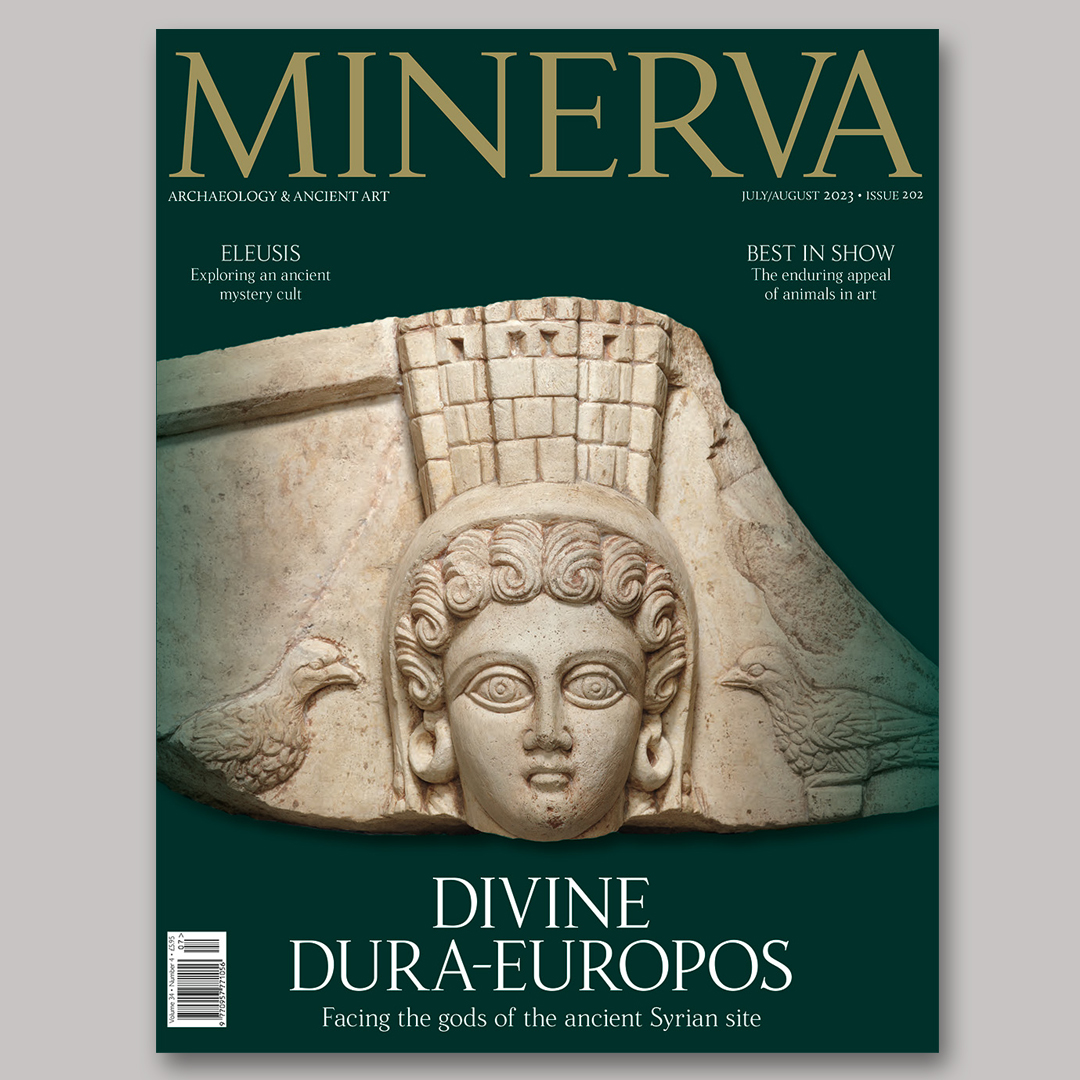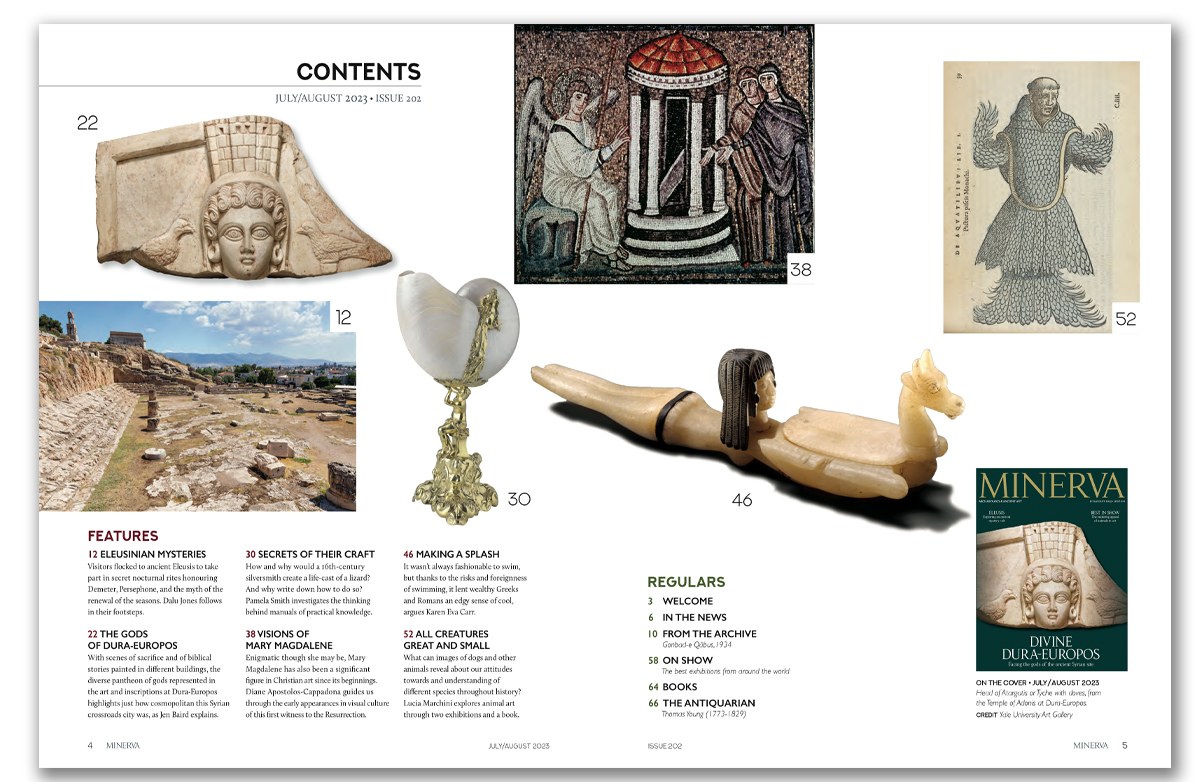Jul / Aug 2023

To celebrate the final issue of Minerva magazine we have provided the full issue free of charge - click here to find out about our website, The Past, where there is a link to the issue
Among the many gods and goddesses worshipped at the ancient crossroad city of Dura-Europos was Atargatis. It is probably this enigmatic goddess whom we see in the relief on our cover, wearing a wall-like crown that represents her role as protectress of the city. It was found in a building known as the Temple of Adonis, where Arsu, Atargatis, Apollo, and Adonis were all honoured through inscriptions or images. This rich mix of deities is reflected in art across the pluralistic city, with soldiers depicted sacrificing to Syrian gods who had been integrated into the Roman army religion, and private houses adapted into religious buildings with Christian and Jewish wall paintings, as Jen Baird writes.
The Christian wall paintings at Dura-Europos include a fragmentary scene showing a procession of women, once thought to be holy women (Mary Magdalene among them) approaching the tomb of Christ. We return to the site later in the issue to start our tour of early Christian depictions of the Magdalene with Diane Apostolos-Cappadona.
Elsewhere, Dalu Jones takes us on a journey along the Sacred Way to the Greek site of Eleusis, home to a famous mystery cult whose initiates carried out secret nocturnal rites related to Demeter and the abduction of Persephone. Then Karen Eva Carr guides us through the differing perceptions of swimming in the ancient world, exploring how it was used not only to cool off, but to appear cool.

We also have a pair of articles looking, in different ways, at the relationship between art and the natural world. First, Pamela Smith shares insights into the fascinating but gory practice of life-casting, through which early modern artists could imitate the generative and transformative power of nature. Their recipes were written down in manuals that tell us much about the role of experimentation, the use of the human body, and attitudes toward practical craftwork. Later, we look at images of dogs and other animals, in paintings, sculptures, and books that show our enduring preoccupation with different species.
Due to rising costs, this will be the last issue of Minerva published for the foreseeable future, and so the last time I introduce you to an issue. I started writing for Minerva under Lindsay Fulcher in 2014, and it has been a pleasure following in her footsteps as editor, learning from and travelling vicariously through the work of our authors. My thanks go to everyone who has worked on and contributed to Minerva – and to you, our loyal readers.
Lucia Marchini
Editor



